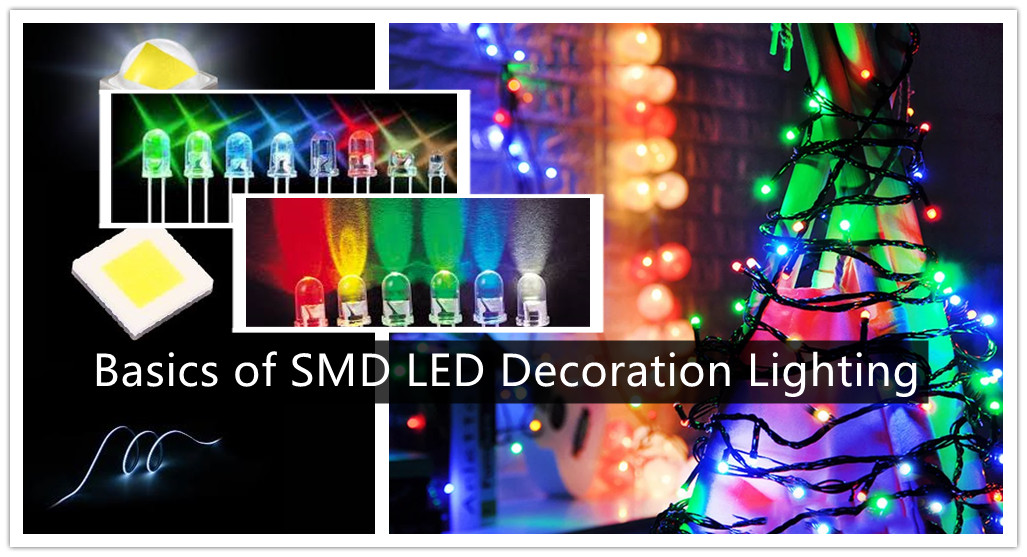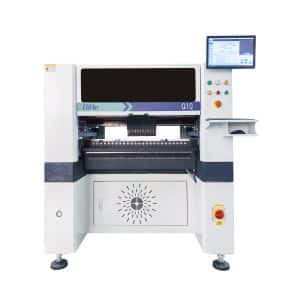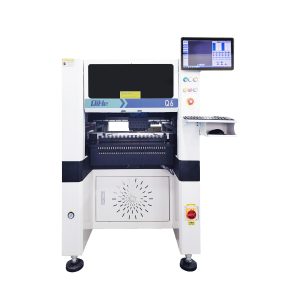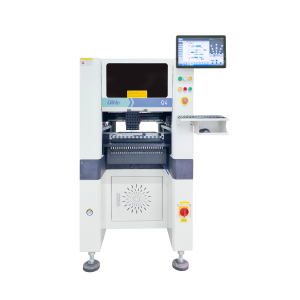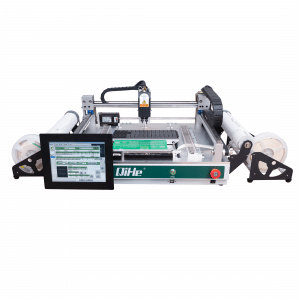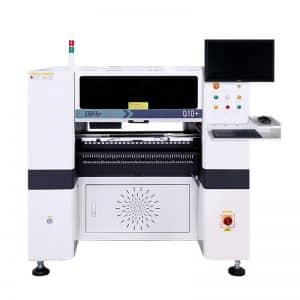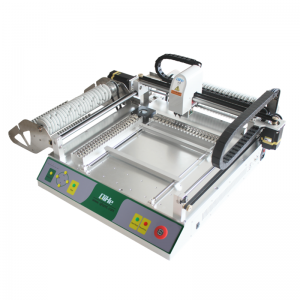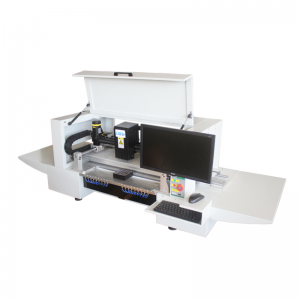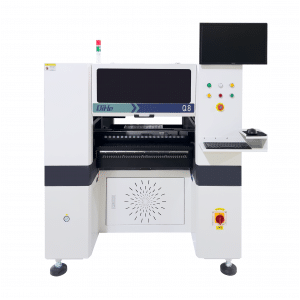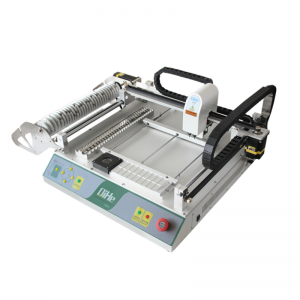Lunar new year isn’t far off now, and whether you’re celebrating it or not, you may well have started seeing decoration lights starting to appear adorning houses . How do these lights actually work, and how can they be made to produce such an array of colours? Today qihe smt pick and place machine sharing Basics of SMD LED Decoration Lighting .
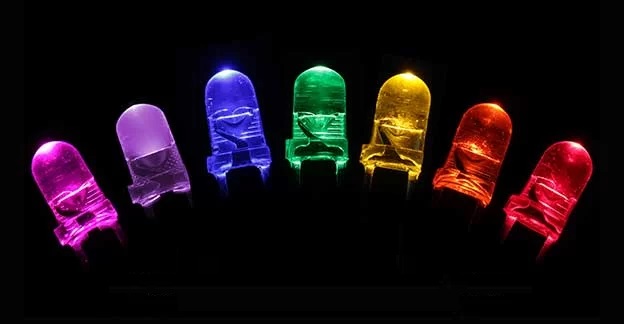
LED stands for light-emitting diode, and they come in a whole range of colours, from reds and oranges to blues and violets. Though they may look small, they’re packing some serious science – in fact, the 2014 Nobel Prize in physics went to scientists who worked on discovering how to make efficient blue LEDs. Before we discuss that though, let’s begin with the basics.
It makes sense to start by explaining how LEDs can produce light in the first place. LEDs are made of semiconducting materials, materials which conduct electricity under some conditions but not others. Several different semiconducting materials can be used in LEDs, but a lot of them are gallium-based, for example, gallium nitride and gallium phosphide.
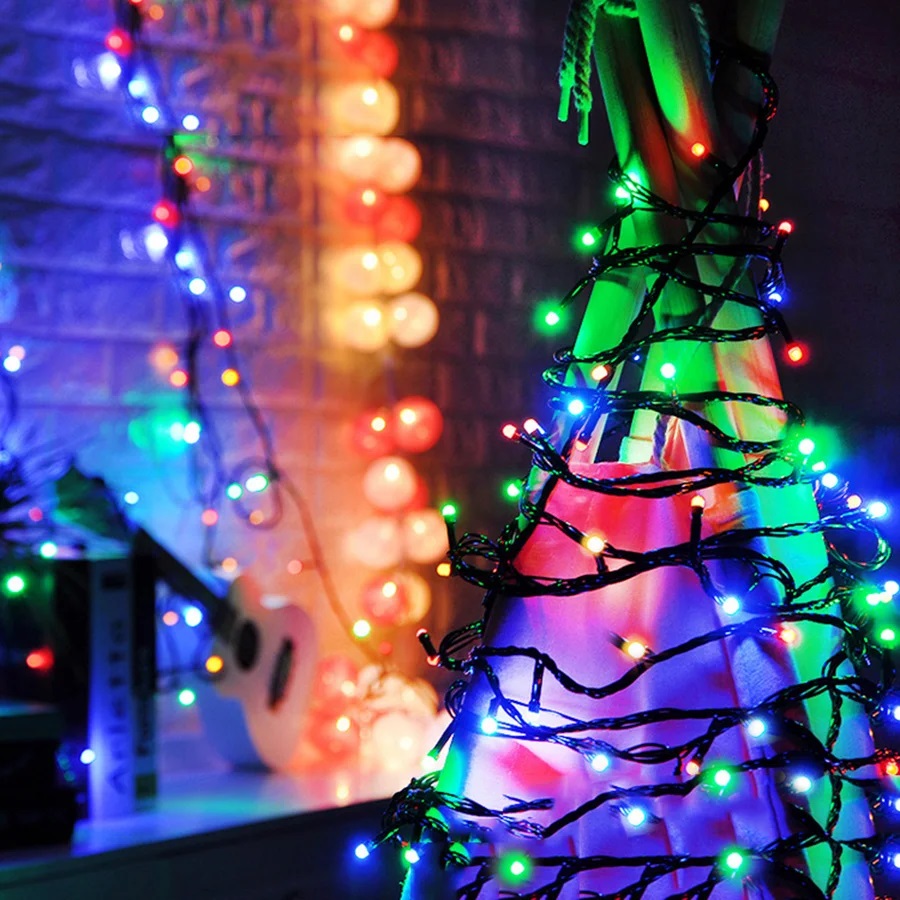
LEDs consist of two layers of semiconducting material. The layers are “doped” with impurities, which is to say that atoms of elements other than those originally in the semiconducting material are mixed in. This doping can create different types of layers: p-type layers and n-type layers. The n-type layer has a surplus of electrons, whereas the p-type layer has an insufficient number of electrons, and as such has what are referred to as electron ‘holes’: positions in atoms where an electron could be, but isn’t.
When a current is applied to the LED, the electrons in the n-type layer and the electron ‘holes’ in the p-type layer are driven to an active layer between the two. When the electrons and electron ‘holes’ combine, energy is released, and this is seen as visible light. While this explains how light is produced, we have to look a little more closely at what’s going on to explain how different colours can be obtained.
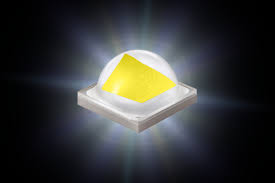
The colours obtained from LEDs are determined by the semiconducting materials used. As you can see in the graphic, there’s not just one material used for all of the different colours, but a range of possibilities. By using different materials, and adding different impurities to these materials, we can change the size of the band gap – that is, the size of the energy difference between the n-type layer and the p-type layer. The bigger this band gap, the shorter the wavelength of light produced by the LED. So for a red LED, a relatively small band gap is required. For blue LEDs, a larger band gap is needed.
Smaller band gap LEDs were easier to produce, but producing LEDs with the small band gap needed to produce blue light proved more problematic. This was important to work out because red, green and blue LEDs were all needed to produce white light. In the early 1990s, scientists finally worked out how to produce blue LEDs using gallium nitride, and were awarded the 2014 Nobel Prize for their work.
Today LEDs aren’t just found in Christmas lights, but also in many normal light bulbs. They have many advantages over traditional bulbs: they last longer compared to conventional bulbs (up to 100,000 hours compared to 1,000 hours for incandescent bulbs) and they are more energy efficient, requiring less energy to emit the same amount of light. Thanks to LEDs, the electricity bill for that house covered from roof to foundations in decoration lights isn’t quite as high as it could be!
Read more: Basics of SMD LED Decoration LightingBest seller SMT Machine :Qihe smt line products
-
Q10 SMT Automatic pick and place machine 10 Heads 100 Slots High Precision and High Efficiency SMT/LED Assembly
-
Q6 SMT pick and place machine 6heads 50slots With PCB Rail Servo Pick&Place Machine
-
Q4 SMT pick and place machine 4heads 50slots With PCB Rail Servo Pick&Place Machine
-
TVM802B Plus SMT pick and place machine 2heads 58slots desktop pick&place deluxe edition
-
QM10 SMT pick and place machine 10heads 80slots Fully Automatic Chip mounter SMT Assembly
-
TVM802BX SMT pick and place machine 2heads 46slots desktop pnp mounter deluxe edition
-
QL41 SMT pick and place machine 4heads 8slots LED for 1.2meters led strip pick&place machine
-
Q8 SMT pick and place machine 8heads 80slots Fully Automatic Chip mounter SMT Assembly
-
TVM802AX SMT pick and place machine 2heads 29slots desktop deluxe edition SMT Pick&Place Machine
What is SMT in engineering?
Surface mount technology is a part of the electronic assembly that deals with the mounting of electronic components to the surface of a PCB. Electronic components mounted this way are called surface-mounted devices (SMD). SMT was developed to minimize manufacturing costs while making efficient use of board space.Qihe SMT company develops and produces all kinds of SMT equipment suitable for world wide market, including pnp machine,reflow oven,stencil printer,pcb handling machines,and other products.
Small desktop pick and place machine TVM802A,TVM802B,TVM802AX,TVM802BX series suitable for beginners, for hobbiest or low vol usag.
Advanced level 4-head LED strip placement QL41 led machines and with rail universal series TVM925S,TVM926S,pick and place
Fully automatic 6-10-head placement QM61,QM62,QM81,QM10,machines, which are suitable for high volume mass production in factories.
Know more about us https://www.qhsmt.com/about-qihe-smt-equipment/
Follow us on social media https://www.facebook.com/Qihesmt/
What is SMT in programming?
Offline Automated Programming vs Inline SMT Programming
Qihe pick and place machine can be programmed directly on the SMT equipment .
Or Coordinates can also be imported csv file through programming software.
Currently supported software such as protel,DXP,Altium Designer,Pads,Candes,proteus,DXP.
Inline SMT programming is a solution to consider for narrow segments of device programming requiring short programming times, with medium to high volume, for just one device type.
WHAT IS SMT pick and place machine?
SMT (Surface Mounted Technology) is a comprehensive system engineering technology, which covers substrates, design, equipment, components, assembly processes, production accessories and management. When it comes to SMT pick and place machines, the automatic SMT production line requires automatic loading and unloading machine, automatic solder paste printing machine, placement machine, reflow soldering machine, AOI inspection equipment, conveyor,connecting table, etc. For these SMT assembly line equipment, Qihe SMT can offer you machines in prototype SMT line, small SMT production line, mass production SMT line at low SMT line cost. Contact us now if you are interested.pick and place.pick and place machines,smt machine price,smt machine supplier,suction nozzle,smt assembly,feeder,stock in eu,pcb printer,openpnp feeder,openpnp,pcb pick and place,smt nozzle,smt line,smt meaning,smt process,smt setup,pnp machine,pcb assembly,p&p machine,p&p,pick&place,pick&place machine,pnp,stencil printer,reflow oven,pick and place machine,SMT equipment,smd machine,smt machine,SMT pick and place machine,pick and place machine,.
WHAT IS SMT ASSEMBLY LINE?
With the development of technology, future electronic products will be lighter, smaller and thinner. Traditional assembly technology can no longer meet the requirements of high-precision and high-density assembly. A new type of PCB assembly technology-SMT (Surface Mount Technology) has emerged. SMT Assembly is the use of automated machines to assemble electronic components on the surface of the circuit board. Its density, high speed, standardization and other characteristics occupies an absolute advantage in the field of circuit assembly technology. In addition, SMT assembly has a wide range of uses.
https://www.qhsmt.com/fully-automatic-smt-pick-and-place-machine-line/

